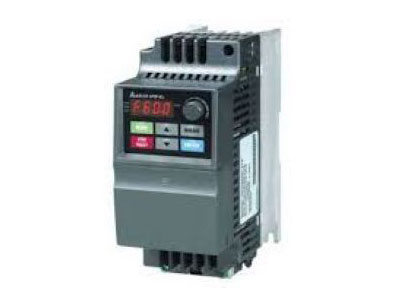Key Takeaway
A Variable Frequency Drive (VFD) functions as a motor controller by adjusting the frequency and voltage of the electrical power supplied to an electric motor. This control enables precise regulation of the motor’s speed and torque, crucial for various industrial applications. During start-up, the VFD smoothly ramps up the motor’s speed to avoid sudden surges, enhancing operational efficiency and prolonging equipment lifespan. Similarly, during shutdown, it gradually ramps down the motor to a stop, minimizing wear and tear. This dynamic control over motor speed and acceleration makes VFDs indispensable in industries where precise control and energy efficiency are paramount, such as manufacturing, HVAC systems, and conveyor belts.
Overview of VFD Control Types
VFDs primarily operate through two types of control: open loop and closed loop. Open loop control, also known as scalar control, is simpler and less expensive but offers limited precision. In contrast, closed loop control, or vector control, provides higher accuracy and responsiveness by continuously adjusting the motor’s parameters. Each method has its own set of advantages and trade-offs, making the selection dependent on specific application requirements.

Open Loop Control in VFDs
Open loop control systems in Variable Frequency Drives (VFDs) regulate motor speed by adjusting the frequency and voltage supplied. Unlike closed-loop systems, open loop control does not use feedback from the motor. This simplification reduces system complexity and costs, making it an attractive option for many applications.
However, the absence of feedback means that open loop control is less precise. This lack of precision makes it suitable for applications where exact speed control is not critical. Typical uses include fans, pumps, and conveyor belts, where performance demands are moderate.
One of the key advantages of open loop control is its simplicity. Without the need for sensors or complex feedback mechanisms, maintenance and setup are straightforward. This ease of use is particularly beneficial in environments where minimizing downtime is crucial.
Despite its simplicity, open loop control still offers reliable performance for many industrial tasks. It’s an excellent choice for applications requiring consistent operation without the need for fine-tuned speed adjustments.
You May Like to Read
Closed Loop Control in VFDs
Closed loop control systems in Variable Frequency Drives (VFDs) enhance performance by integrating feedback from the motor. This feedback loop continuously adjusts drive parameters in real-time, ensuring precise control over speed and torque. This capability is particularly beneficial in applications requiring high accuracy and dynamic response, such as cranes, elevators, and high-performance machine tools.
By maintaining constant monitoring and adjustment, closed loop control systems can adapt to varying load conditions. This results in more stable operation and improved efficiency. For instance, in a crane, the VFD can swiftly respond to changes in load, ensuring smooth and precise lifting and lowering movements. Similarly, elevators benefit from consistent speed and positioning, enhancing safety and comfort for passengers.
However, the complexity and cost of closed loop systems are higher than open loop systems. But the investment is justified by the significant improvements in control and efficiency. Engineers in high-performance applications value this system for its ability to deliver exact results and reliability. Understanding and implementing closed loop control can greatly enhance the performance and longevity of industrial machinery, making it a crucial aspect of modern industrial automation.
Comparison Between Control Types
When comparing open loop and closed loop controls, it’s crucial to consider the specific needs of your application. Open loop systems are generally more cost-effective and simpler to implement. They don’t rely on feedback mechanisms, making them suitable for less demanding tasks where precision and adaptability aren’t critical. For instance, applications like basic conveyor belts or simple heating elements can benefit from open loop controls due to their straightforward nature and lower cost.
On the other hand, closed loop systems offer superior control and performance, albeit at a higher cost and complexity. These systems use feedback to adjust and correct the output continuously, ensuring higher accuracy and reliability. For applications requiring precise control, such as robotic arms, CNC machines, or advanced HVAC systems, closed loop controls are indispensable. They can adapt to load variability and dynamic changes, maintaining optimal performance.
Ultimately, the choice between open loop and closed loop control systems should be guided by factors such as required accuracy, load variability, and the need for dynamic response. While open loop systems are excellent for simple, cost-sensitive applications, closed loop systems are essential for tasks demanding high precision and adaptability.
Practical Applications of Each Control Type
Understanding the practical applications of control types is crucial for any engineer, especially for those new to the industry. Let’s delve into where each type excels.
Open Loop Control: This type of control is straightforward and effective in environments where the motor’s load remains relatively constant. It’s commonly used in HVAC systems, where maintaining a consistent airflow is key. Simple material handling systems, like conveyor belts, also benefit from open loop control due to their predictable load patterns. These applications do not require feedback mechanisms to adjust operations, making open loop control an efficient and cost-effective solution.
Closed Loop Control: When precision and adaptability are paramount, closed loop control is the preferred choice. In robotics, for instance, maintaining exact positions and movements is critical. CNC machines also rely on closed loop systems to ensure precise cutting and shaping of materials. Any application where maintaining exact speed and torque is vital benefits from closed loop control, as it continuously adjusts operations based on real-time feedback. This adaptability ensures high performance and accuracy, essential in demanding industrial environments.
Conclusion
Choosing the right VFD control type involves evaluating the specific requirements of your application. Consider factors such as cost, complexity, precision, and performance needs. Open loop control is suitable for straightforward applications with less critical performance demands, while closed loop control is essential for high-precision, dynamic environments. By understanding the strengths and limitations of each control type, engineers can make informed decisions that enhance efficiency and productivity in industrial settings.
